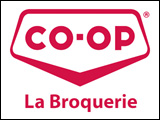The CEO of the Center for Food Integrity says the advent of social media has forced those involved in agriculture to change the way they communicate with consumers.
“Restoring and Maintaining Trust of Pork Consumers” was the topic discussed yesterday as part of the Banff Pork Seminar’s opening plenary session.
Charlie Arnot, the CEO of the Center for Food Integrity, says in the age of social media, to effectively communicate with consumers we need to understand their social expectations, we need to be able to communicate with them in a way that’s meaningful to them, we need to ask questions and be committed to engaging not just sharing our point of view.
It’s really hard to over state the impact of social media on this problem or this challenge because consumers now are really segmented into different silos of specific interest.
You can find people who are trombone enthusiasts, people that oppose pork production, people who like to garden.
Every group has its own silo of interest so being able to engage with them and identify with them is going to be crucially important.
So we need to be able to connect with them because the communications become much more tribal and insular but to do so we have to change our approach.
We can’t simply come into these groups that have already established kind of social norms within the group and dump a lot of data and dump a lot of information.
First of all we need to change our perspective on what a solution looks like.
We tend to be very solution focused in agriculture.
Farmers are good at solving problems in the next cycle of production what ever it happens to be.
If I had a problem with that particular genetic line I choose genetics.
If have a problem with that animal health product I get another animal health product.
Fixing public perception doesn’t happen that quickly.
This is something that is going to be a 40 or a 50 year challenge so we really need to have a 25 year vision with a shorter term action plan.
That action plan includes being able to identify who are the people with whom we want to engage on line, how do we engage with them, how do we sustain that level of engagement and who are the farmers that are willing to do that and have we given them the tools to be successful.
Arnot says there are specific steps that can be taken, but they’re different from the historical approach we’ve taken.



